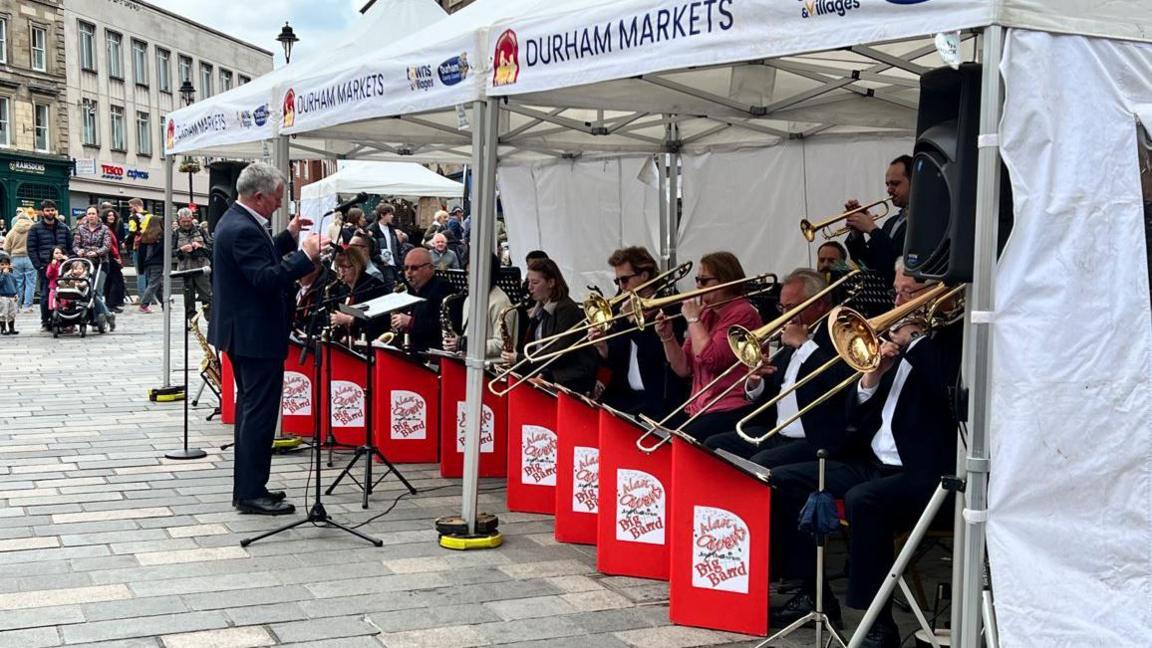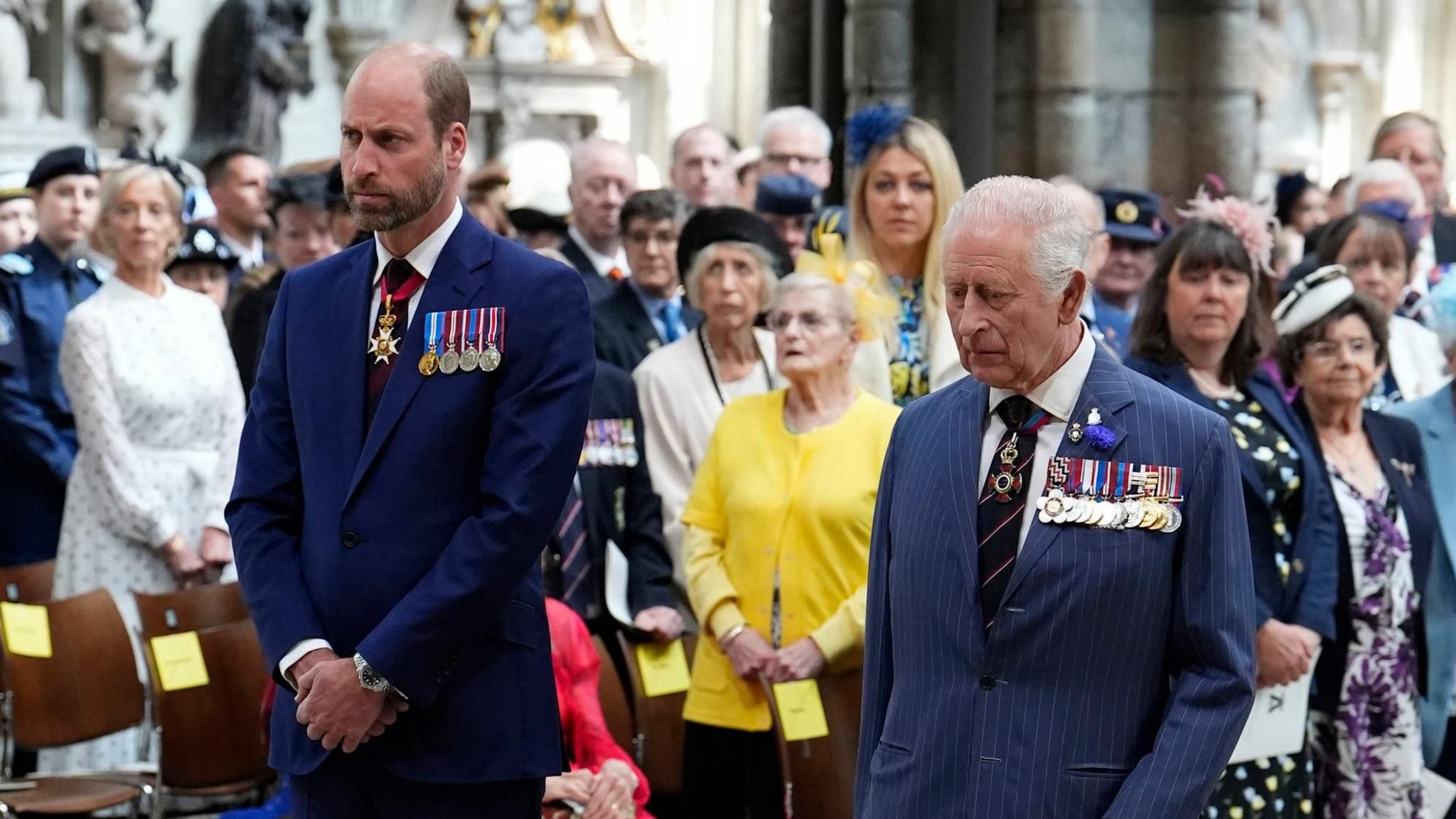VE Day celebrations like 'nothing I'd ever seen'
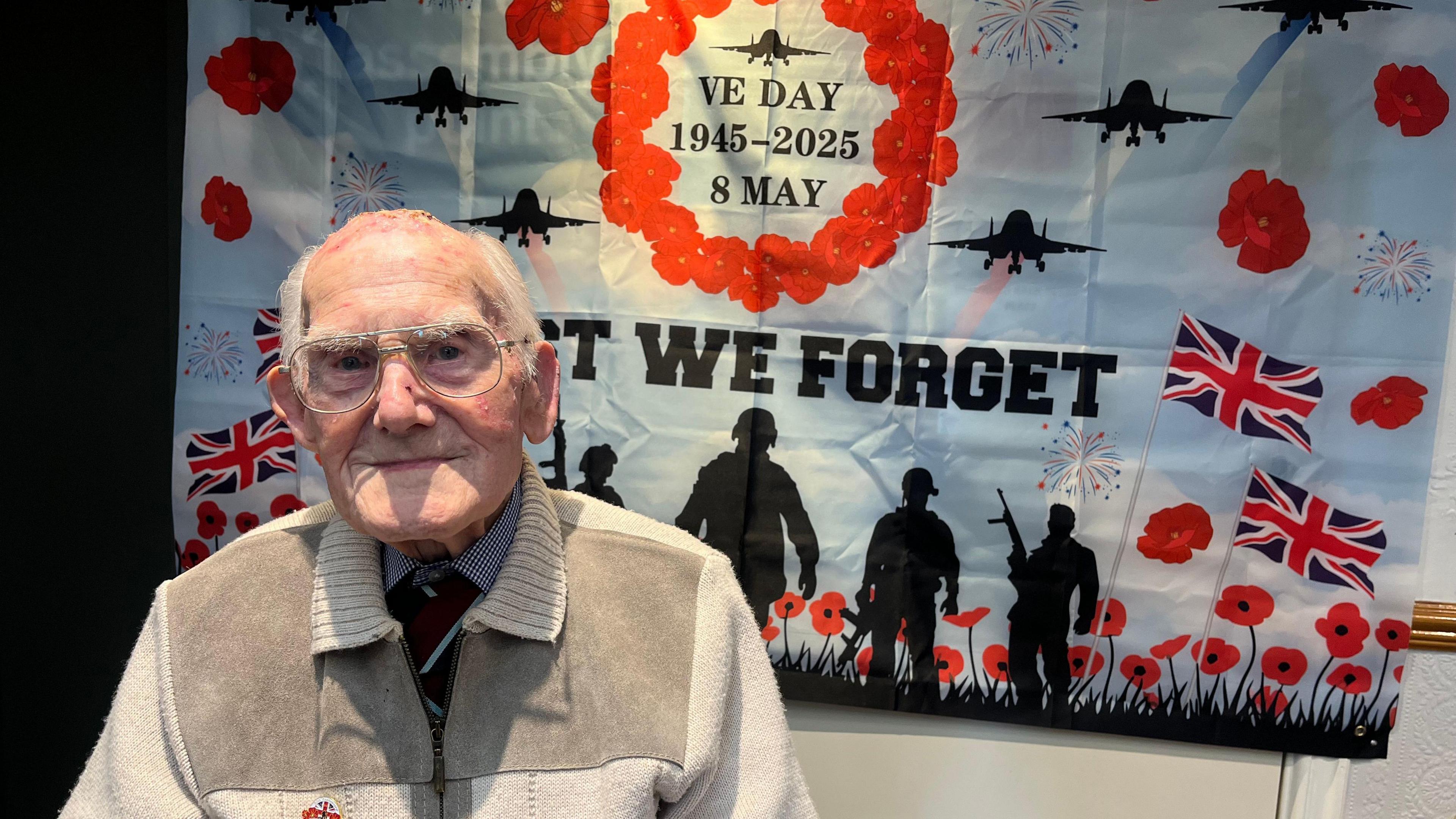
Kenneth Johnson said he remembered everyone waltzing and snake dancing
- Published
"It was like nothing I'd ever seen," 102-year-old RAF veteran Kenneth Johnson said of the VE Day celebrations in 1945.
He is one of thousands across the north-east of England and Cumbria commemorating the 80th anniversary of the end of World War Two in Europe.
Services and parties have taken place across the region, including parades in Redcar and the unveiling of a poppy art installation in Windermere, ahead of the lighting of beacons as part of a national hilltop ceremony.
"Everyone was waltzing and snake dancing [conga lines] - it seems quite silly now," Mr Johnson remembers.
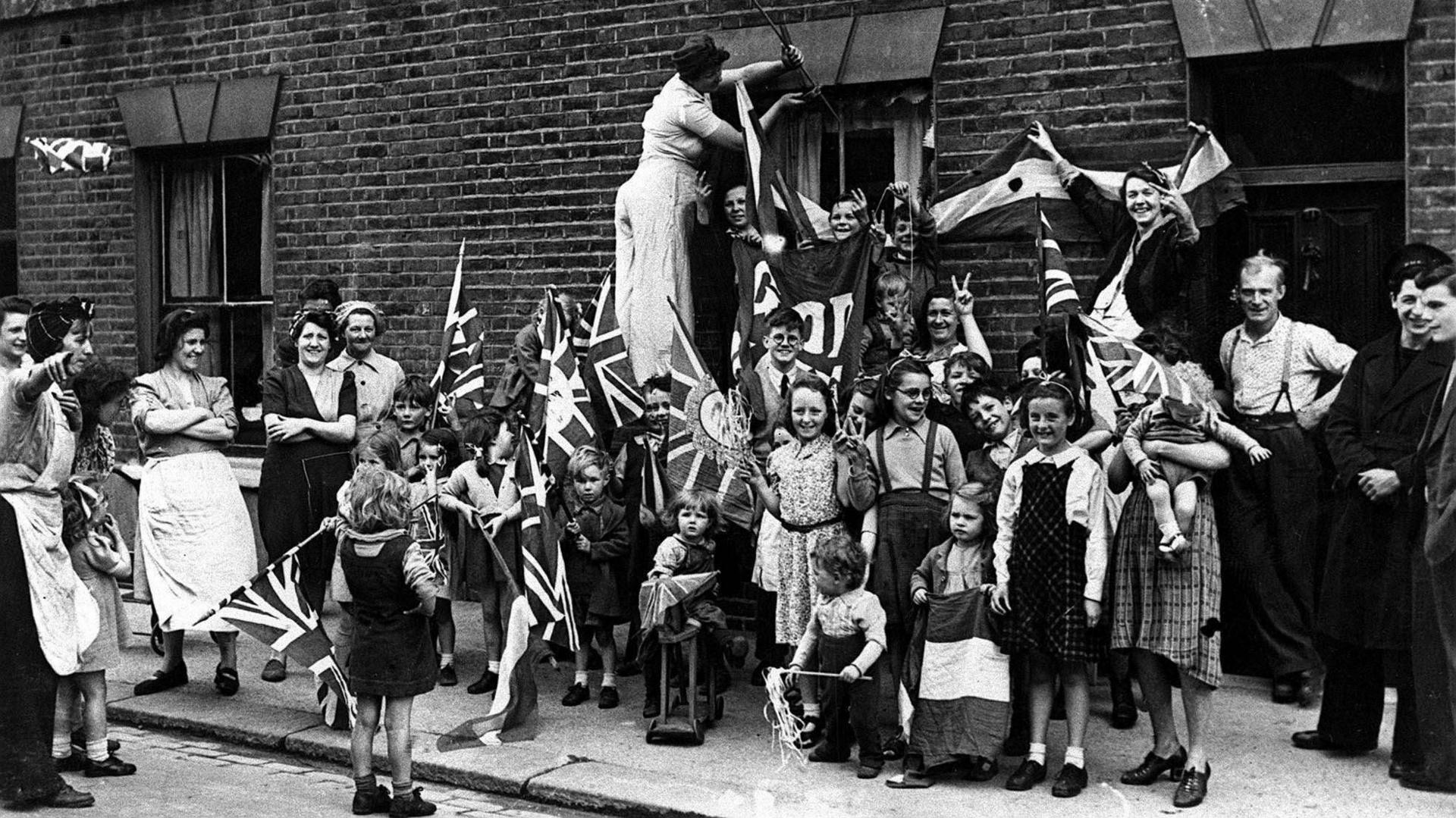
Huge crowds took to the streets on 8 May 1945 to sing, dance and rejoice after nearly six years of war
Mr Johnson, from Darlington, "broke out" of his barracks near Aylesbury to attend the Victory in Europe Day celebrations.
After enjoying themselves, Mr Johnson said he and his fellow comrades spent the night in an "underground shelter" and the following morning attempted to "sneak back" to their barracks.
"When we got off the train we saw the Red Hats [military police] were waiting at the station, they grabbed a few lads but we ran and hid," he said.
After getting back to the aerodrome base, Mr Johnson realised they were not the only ones to have left so he escaped disciplinary action.
He was 23 when the war in Europe ended and admits of feeling a sense of "relief" on hearing the news, but the memories are still there.
"The war was a terrible, I hope it's remembered, not what I did, because greater people played their parts than me."
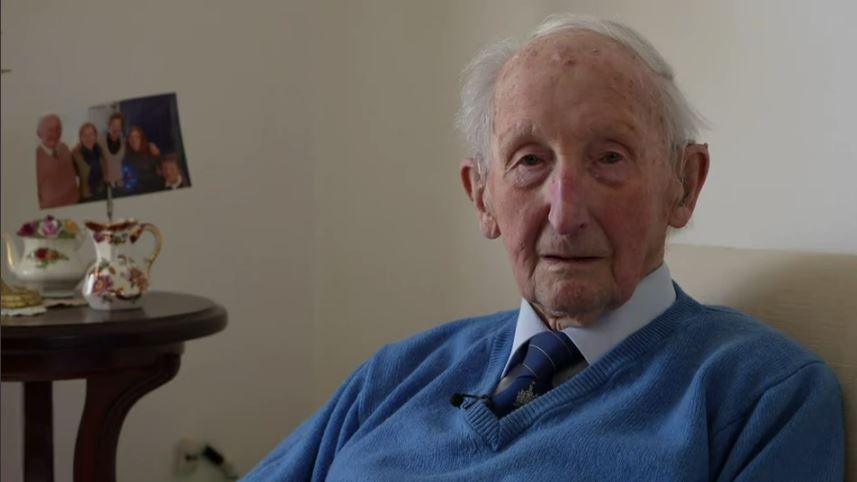
Veteran George Young said he lost four years of his young life serving in World War Two
One hundred-year-old George Young, from Amble, was stationed in Sri Lanka with the RAF during World War Two.
He now spends his time with his family playing golf, but told BBC Radio Newcastle how he still remembered his years spent in service.
"Height of winter, freezing conditions, storms, wind, anything could have happened," he said.
"I lost four years of my young life. I'd just joined the Amble golf club as a boy but the war started, the army moved in."
Mr Young was called up for service at the age of 18.
He said: "I remember firing a Sten gun, throwing a live hand grenade and on the passing out parade, we were the smartest guardsmen.
"There aren't many of us left so it is good to have a record of what did happen."
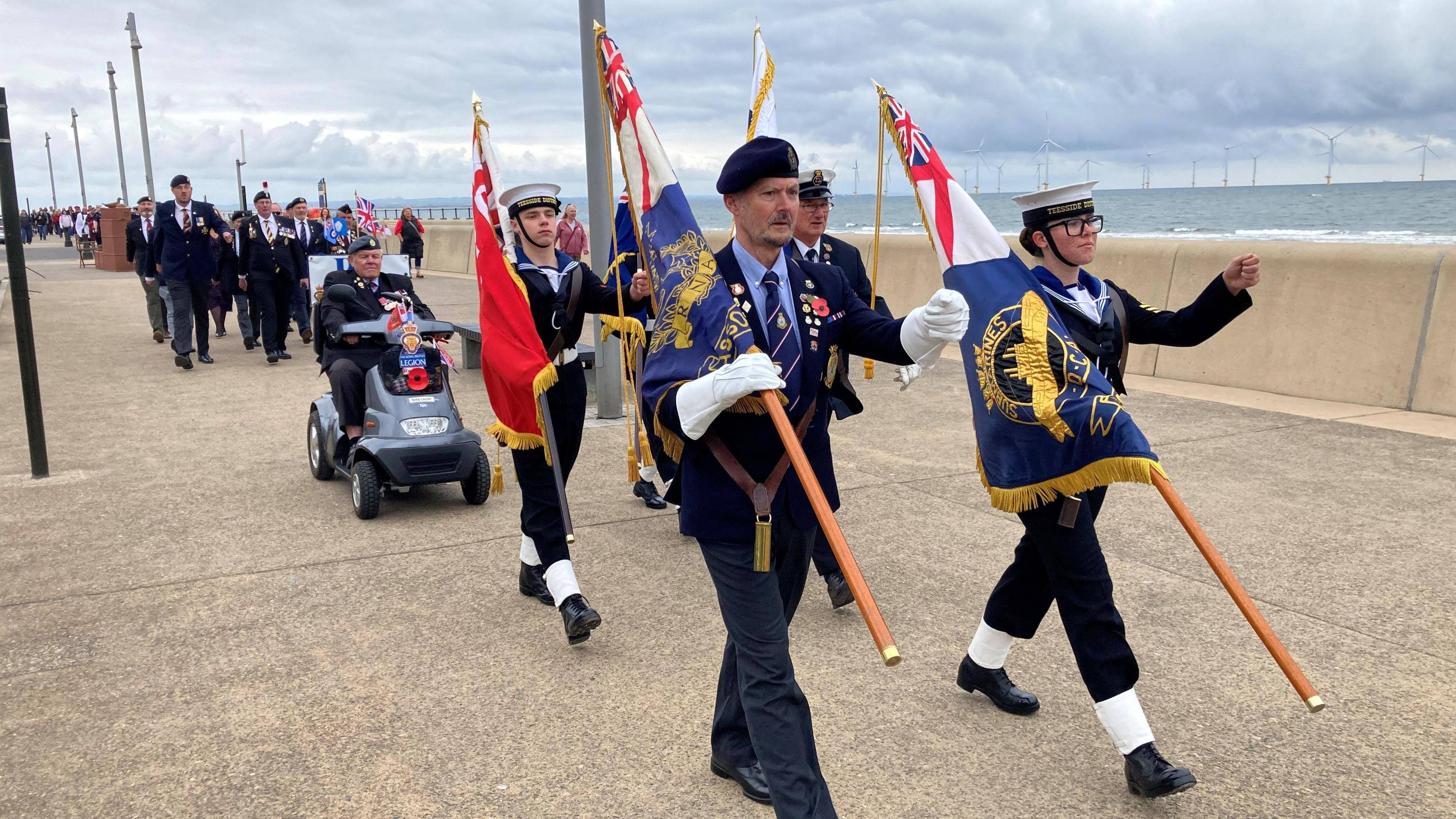
Service men and women took part in a parade shortly after a service was held in Redcar
Parades and services have taken place across the North East, including in Redcar, where hundreds of veterans and service men and women walked from the boating lake to Redcar Beacon.
At Carlisle Cathedral, a service of choral evensong concluded at 18:30 BST with the ringing of the cathedral bells as part of the national "Ring Out In Celebration".
It mirrored the moment on 8 May 1945, when bells rang out across Britain as the nation took to the streets in celebration.

Carlisle Cathedral bell ringers during the VE Day ceremony
Elsewhere in Cumbria, primary school children marked the occasion by dressing as war evacuees.
Briony, a pupil at Windermere's St Martin and St Mary Church of England Primary, said VE Day was about "remembering all of the soldiers who gave up their lives for all of us and tried helping us live in peace".
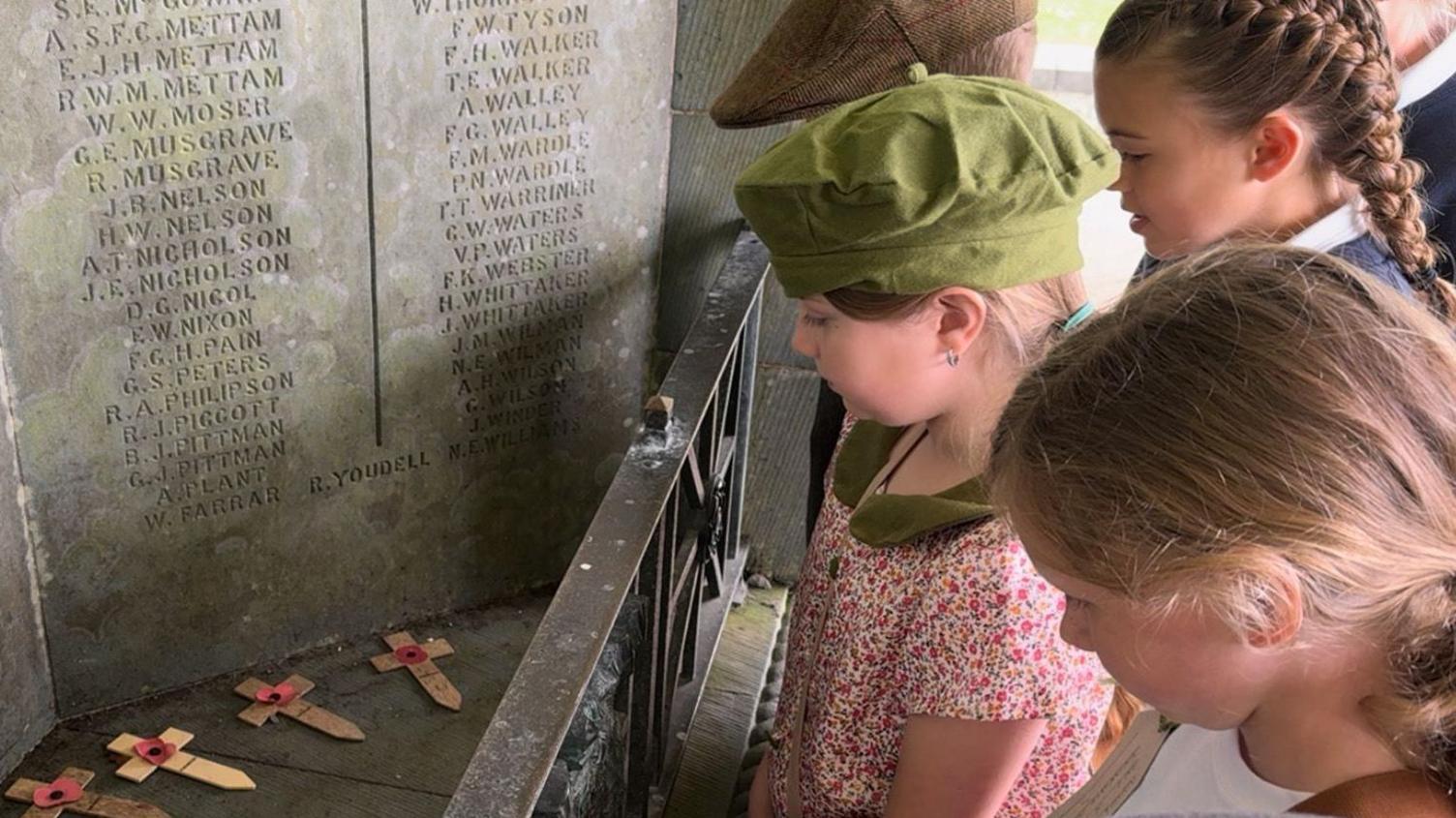
Children in Windermere have been commemorating those who lost their lives
Fellow pupil Noah said: "Soldiers, and not just soldiers but other people, have tried to make this world a better place for us to live in so we don't have to live in more world wars."
The students were also part of a project in which four Windermere schools helped create 4ft (1.2m) poppies under the guidance of artist, Donna Campbell.
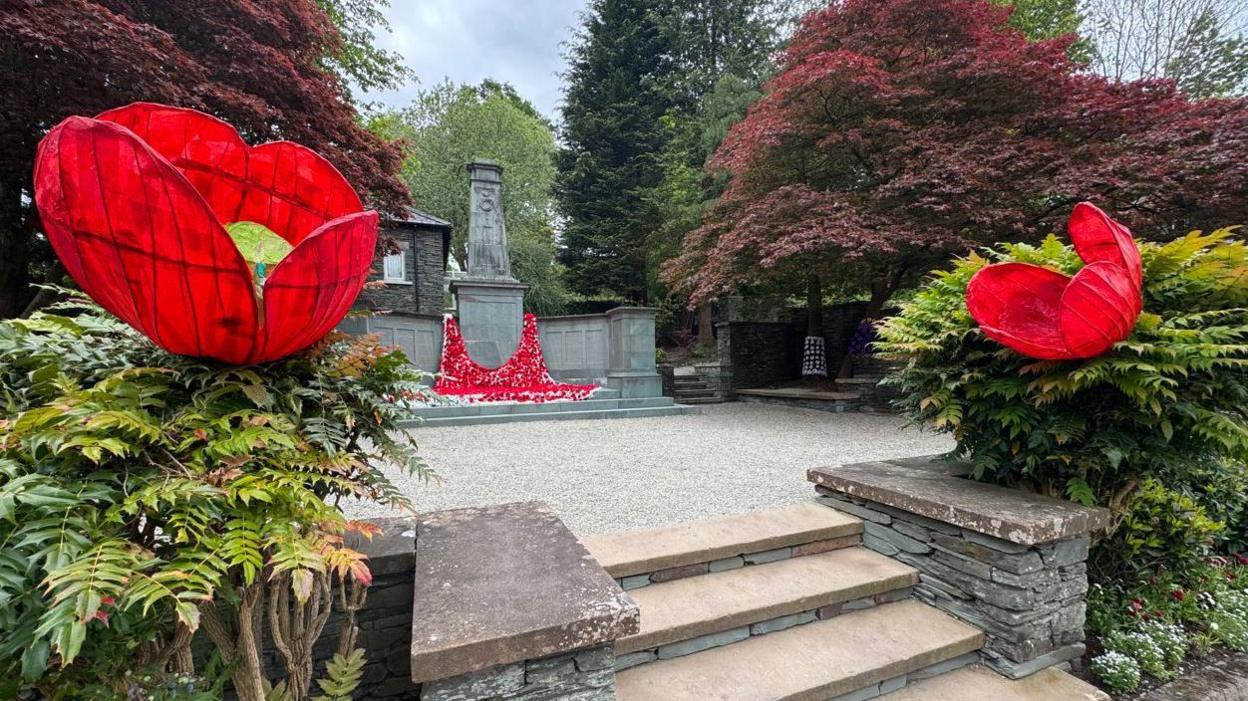
The knitted poppies at Windermere war memorial
They have been installed in various locations in the town, including at the war memorial where a short service was held for VE Day.
A beacon ceremony took place in Windermere, held on the summit of Orrest Head, as part of a national network of hilltop beacons.
After the special moment, some carried torches to light their way back down, just as people could finally turn their lights on across the country in 1945 - after years of blackout, and years of war.
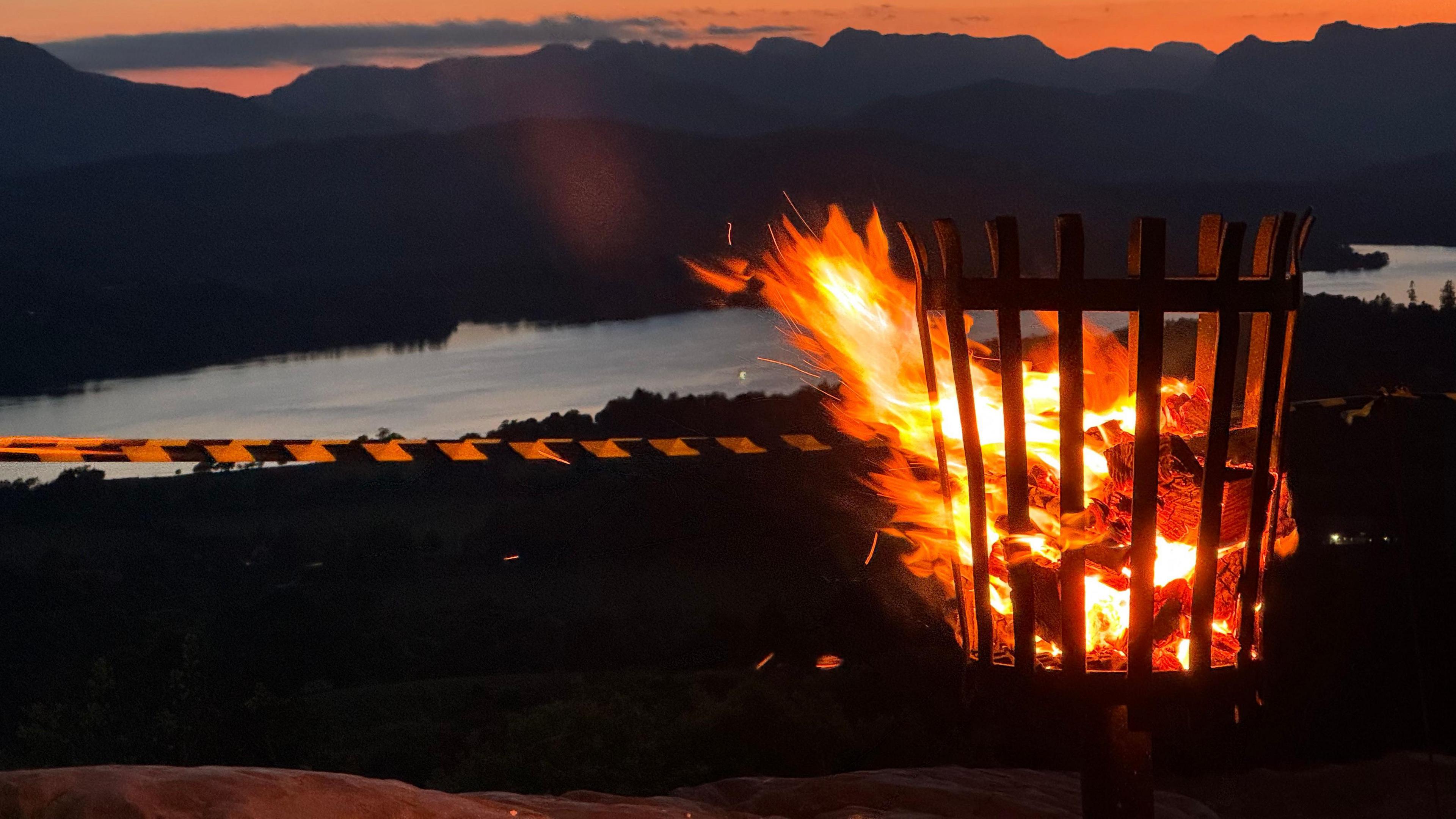
A beacon was lit at Orrest Head in Windermere
Jane Hardy, who attended the ceremony, said her husband had been evacuated to Windermere as a child.
"In fact, I still live in the house, where he was evacuated, so it was really good to come up here and see the beacon," she added.
Windermere and Bowness mayor Christine Hallatsch said it was "a great honour" to be part of the event.
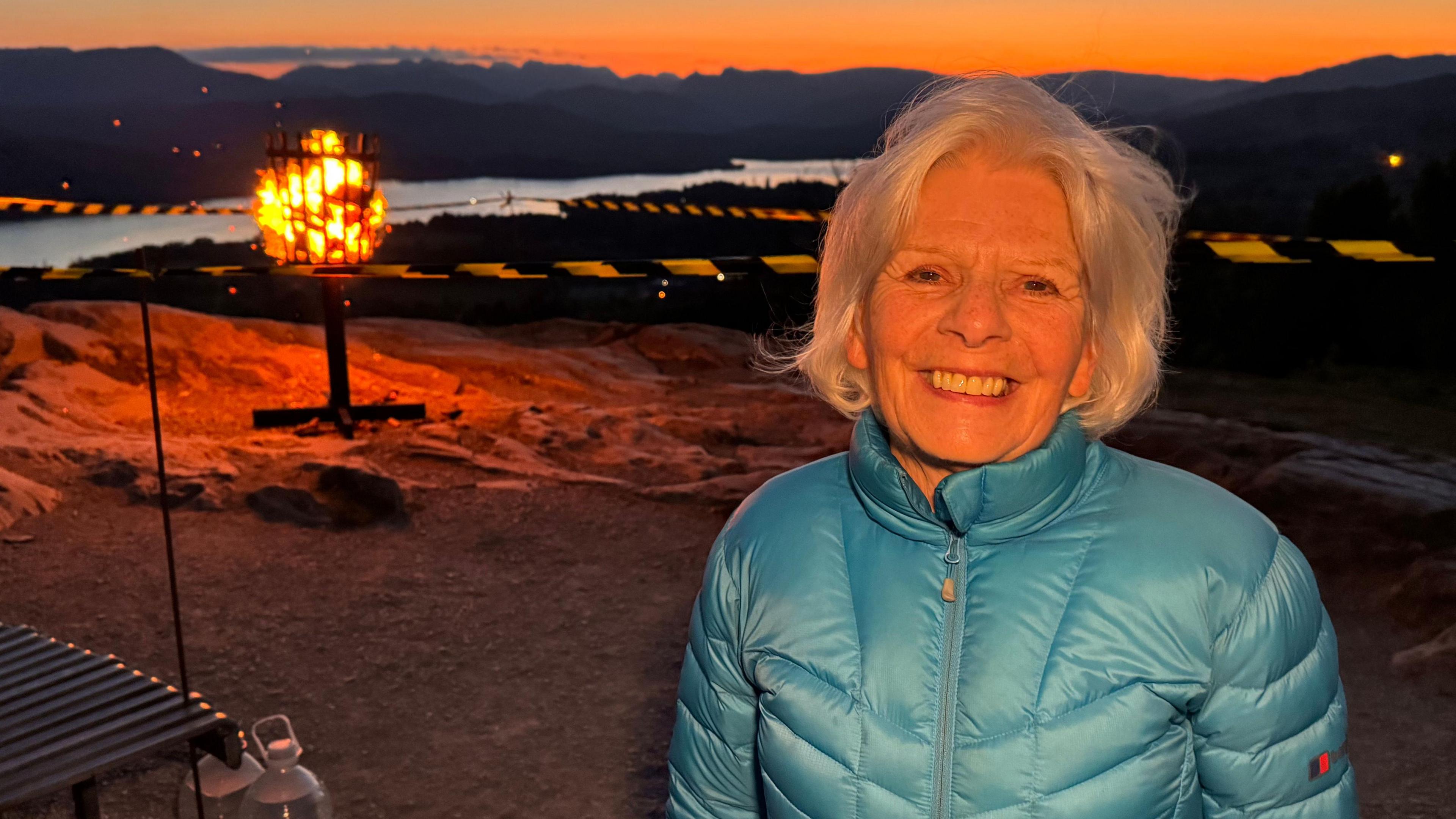
Jane Hardy said it was really good to see the beacon being lit
The day also brought back important memories to Adrian Legg, who was in the Royal Navy for 26 years and served in the Falklands War.
"The end of a war means a lot to me," he said.
"I can remember when we heard the Argentine forces surrendered and that must've been the feeling that the British forces in Europe felt on 8 May in 1945."
On Tyneside, Lord Mayor of Newcastle, councillor Rob Higgins, lit the flambeau beacons in the city, while hundreds gathered to get their spot in the square for the lighting ceremony in Keel Square, in Sunderland.
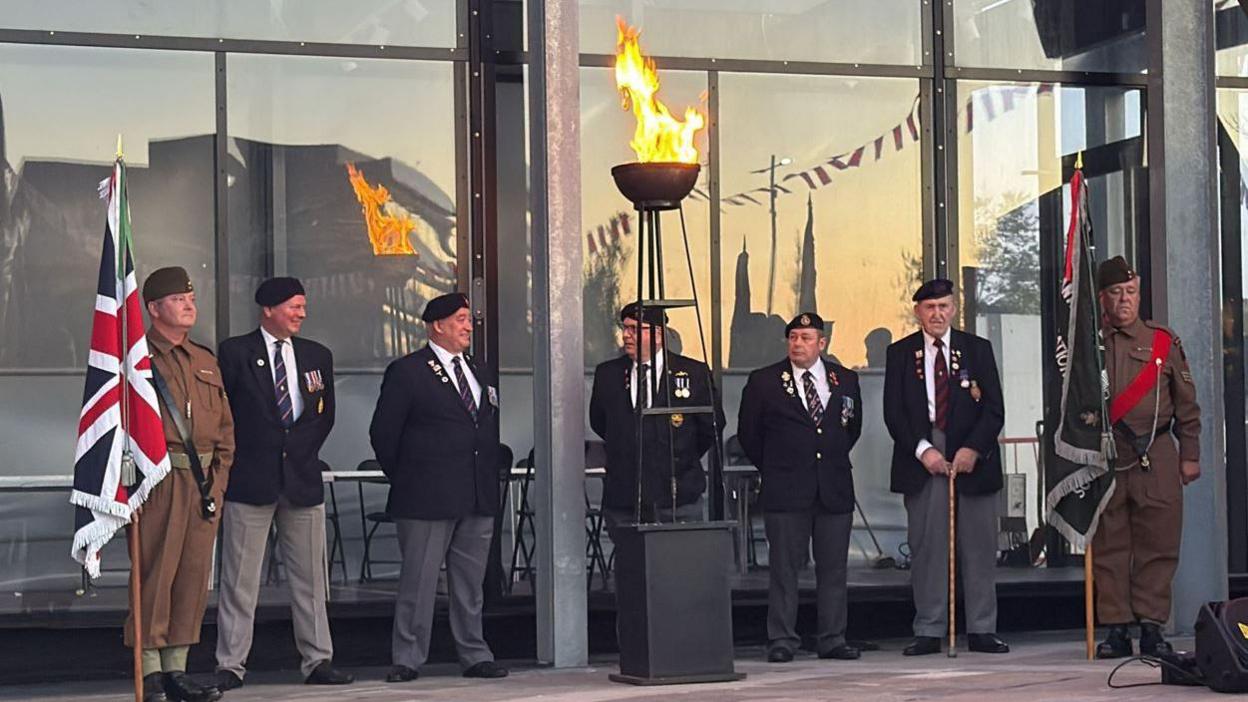
Servicemen and veterans at the beacon ceremony in Sunderland
Joanne Willis and Michelle Jenkins, both from Sunderland, arrived in Keel Square on Thursday morning.
They told the BBC they were "excited to be here".
Beverley Thirwell and her mother Eileen Thirwell also grabbed their seats for the ceremony.
Eileen was alive during World War Two and remembers the original VE Day when she was just 14.
"It was lovely, everybody was singing," she said.
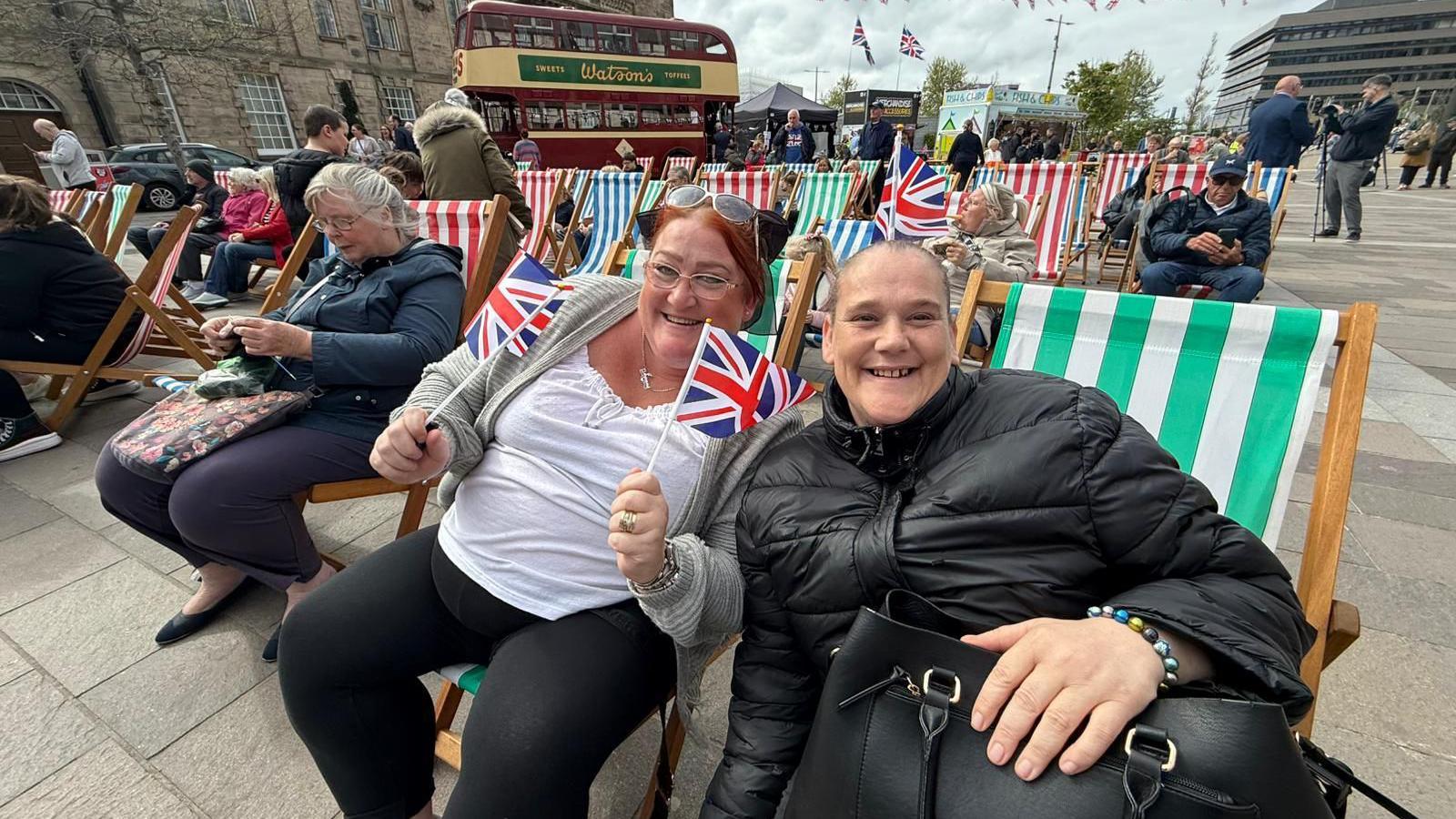
Joanne Willis and Michelle Jenkins were in Keel Square for most of the day
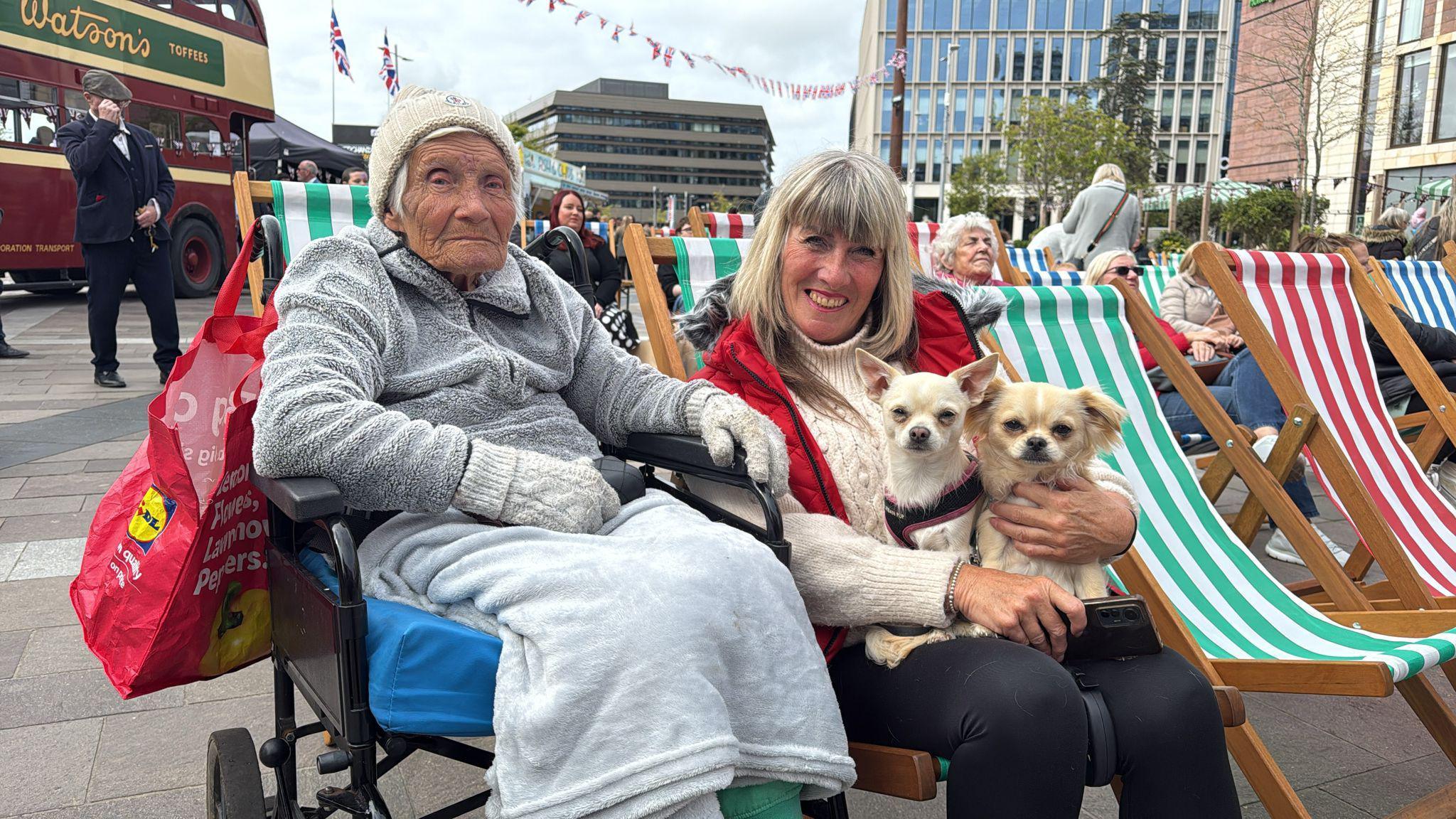
Eileen Thirwell and her daughter Beverley were primed for their spot in Keel Square
At the city's Fire Station, an anniversary concert took place where hundreds of knitted poppies were dropped from each side of the auditorium's balcony.
Each poppy had been knitted by the member of the Wearside community, including schools, care homes, Sunderland College and the Women's Institute.
Beacons in Northumberland, County Durham, Hexham, Blyth and South Tyneside were also lit.
Additional reporting by Andy Watson, Phil Chapman and Jim Scott.
Follow BBC North East on X, external and Facebook, external and BBC Cumbria on X, external and Facebook, external and both on Nextdoor and Instagram, external.
Get in touch
Do you have a story suggestion for BBC North East & Cumbria?


- Published7 May
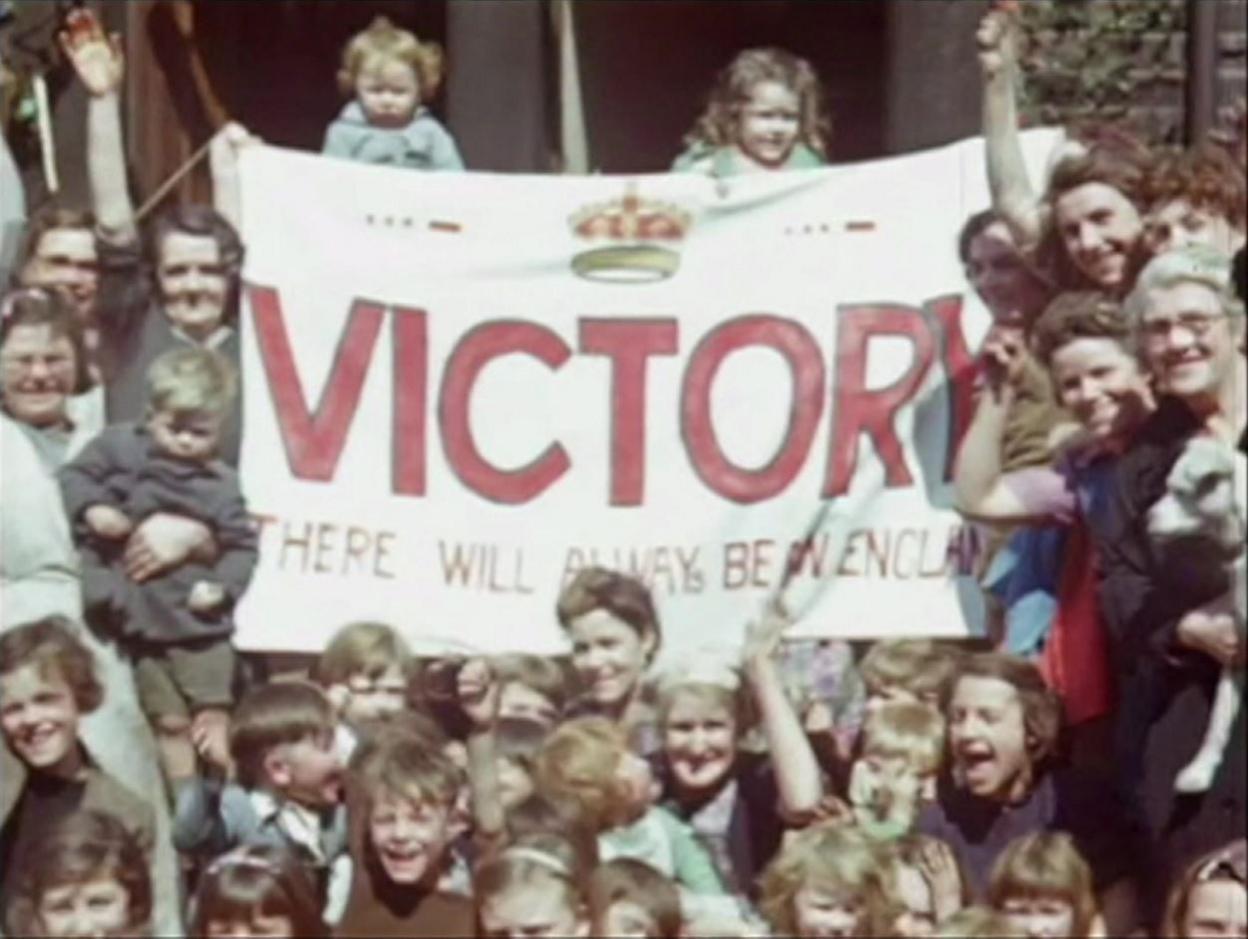
- Published5 May
